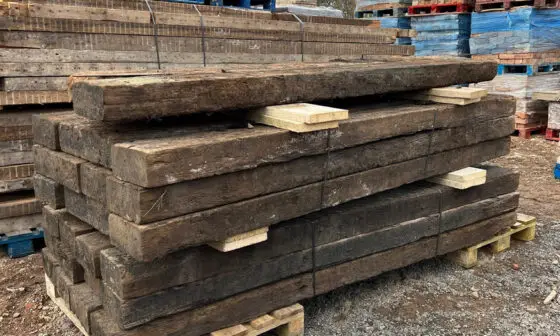
When it comes to flooring, few options match the elegance, warmth, and timeless appeal of wooden floors. They bring a natural beauty to your home, enhance the interior design, and increase property value. However, selecting the perfect wooden floor for your home involves more than just picking a color or style.
This guide will walk you through the essential factors to consider when choosing wooden flooring, ensuring you make a choice that fits your lifestyle, budget, and aesthetic preferences.
1. Understand the Types of Wooden Flooring
Solid Hardwood
Solid hardwood flooring is made from a single piece of wood and can be sanded and refinished multiple times. It’s durable and has a long lifespan, often lasting for decades with proper care. Solid hardwood is available in various species, each offering unique colors and grain patterns.
Engineered Hardwood
Engineered hardwood consists of a top layer of real wood veneer bonded to multiple layers of plywood or high-density fiberboard (HDF). This construction makes it more stable and less prone to warping than solid hardwood, especially in areas with high humidity or temperature fluctuations. Engineered hardwood can be a great choice for basements or over concrete slabs.
Laminate Wood Flooring
Laminate flooring mimics the look of wood but is made from composite materials with a photographic image of wood on top, covered by a protective layer. It’s more affordable than solid or engineered hardwood and is highly resistant to scratches and stains. However, it cannot be sanded or refinished.
2. Consider the Wood Species
Different wood species have distinct characteristics, including hardness, grain patterns, and colors. Popular choices include:
Oak
Oak is one of the most popular choices due to its durability and attractive grain patterns. It comes in two main types: red oak, which has a warm, reddish tone, and white oak, which is more neutral and slightly harder.
Maple
Maple flooring is known for its light, creamy color and subtle grain. It’s very hard and resistant to wear, making it an excellent choice for high-traffic areas.
Cherry
Cherry wood has a rich, reddish-brown color that darkens with age. It’s softer than oak or maple, which means it can dent more easily, but it offers a luxurious look.
Walnut
Walnut is prized for its deep, dark color and straight, tight grain. It’s slightly softer than oak but adds a touch of elegance and sophistication to any room.
Exotic Woods
Exotic wood species, such as Brazilian cherry, tigerwood, and teak, offer unique colors and patterns but can be more expensive. They are typically harder and more durable than domestic species.
3. Assess the Finish
The finish on wooden flooring affects its appearance and maintenance requirements. There are two primary types of finishes:
Pre-finished Wood
Pre-finished wood flooring is sanded, stained, and coated with a protective finish at the factory. It’s ready to install right out of the box and tends to be more durable than site-finished wood. The factory-applied finish is typically more uniform and can come with a longer warranty.
Site-finished Wood
Site-finished wood flooring is installed raw and then sanded, stained, and finished on-site. This allows for a custom finish and a seamless look, as the finish covers the entire floor, including the joints. However, it requires more time and can be messier due to sanding dust and drying times.
4. Choose the Right Plank Width and Length
The width and length of the planks can dramatically impact the look of your floor:
Narrow Planks
Narrow planks (less than 3 inches wide) create a traditional look and can make a room appear more formal. They are often used in historical homes and spaces with classic design elements.
Wide Planks
Wide planks (3 inches or wider) are popular for their contemporary and rustic appeal. They can make a space feel more open and less busy. However, wider planks can be more susceptible to expansion and contraction due to changes in humidity.
Mixed Widths
Using mixed widths can add visual interest and create a unique, custom look. This approach works well in both traditional and modern settings.
5. Evaluate the Installation Method
The installation method can affect the cost and longevity of your wooden floor. Common methods include:
Nail Down
Nailing down is the traditional method for solid hardwood floors. It provides a stable and secure installation but requires a wooden subfloor and specialized tools.
Glue Down
Glue-down installation is used for engineered hardwood and laminate flooring. It’s suitable for concrete subfloors and provides a firm bond, reducing the risk of movement or shifting.
Floating
Floating floors are not attached to the subfloor. Instead, the planks are connected to each other, creating a “floating” surface. This method is commonly used for laminate and some engineered hardwood floors. It’s easier and quicker to install, making it a popular choice for DIY projects.
6. Consider the Room and Traffic
The room where you plan to install the wooden floor and the level of foot traffic it will receive should influence your choice:
High-Traffic Areas
For high-traffic areas like hallways, kitchens, and living rooms, choose harder wood species and more durable finishes. Engineered hardwood or laminate flooring can also be good options due to their enhanced durability.
Low-Traffic Areas
In bedrooms or formal dining rooms, you can opt for softer woods or a more delicate finish, as these areas experience less wear and tear.
Moisture-Prone Areas
In moisture-prone areas like basements, bathrooms, or kitchens, engineered hardwood is preferable to solid hardwood due to its superior stability. Avoid using laminate flooring in areas with high moisture, as it can warp and deteriorate.
7. Set a Budget
Wooden flooring can vary widely in price, depending on the type of wood, finish, and installation method. Set a budget that includes not only the cost of materials but also the installation and any additional expenses such as underlayment, moldings, and transition strips.
Affordable Options
If you are on a tight budget, consider laminate or engineered hardwood flooring. These options can offer the look of solid wood at a lower cost. Shop around for sales and discounts to get the best deals.
High-End Options
For a more luxurious look, invest in solid hardwood or exotic wood species. While these options are more expensive, they can add significant value to your home and last for decades.
8. Seek Professional Advice
Choosing the perfect wooden floor can be overwhelming with so many options available. Seeking advice from flooring professionals can help you make an informed decision. Websites like Floorox.co.uk offer valuable resources and expert guidance on selecting and installing wooden floors.
Conclusion
Selecting the perfect wooden floor for your home involves careful consideration of various factors, including the type of wood, species, finish, plank size, installation method, room usage, and budget.
By taking the time to understand these elements and seeking professional advice, you can ensure that your new wooden floor meets your aesthetic preferences, lifestyle needs, and durability expectations. Wooden floors are a timeless investment that can enhance the beauty and value of your home for years to come.


